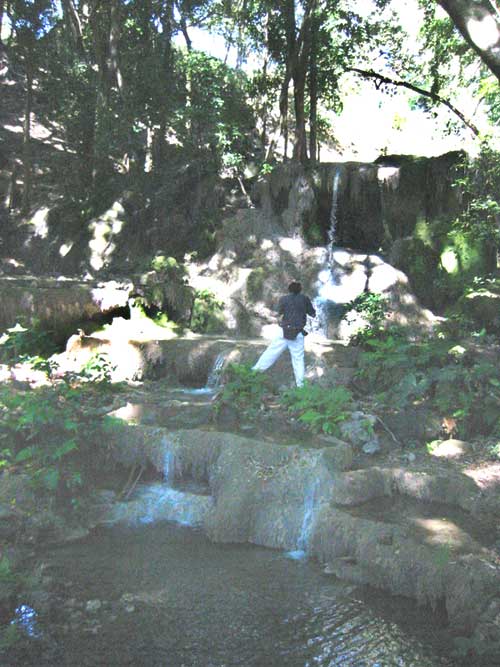Excerpts from Jim Conrad's
Naturalist Newsletter
from the February 4, 2008 Newsletter written in the community of 28 de Junio, in the Central Valley 8 kms west of Pujiltic, Chiapas, MÉXICO
about 800 meters in elevation, ± LAT. 16° 18'N, LONG. -92° 28'W.
CARBONATE-RICH STREAMS
I've seen lots of sugarcane cultivation in the world but this is the first time I've seen large fields of it grown on hillsides, sometimes on fairly steep slopes. Sugarcane requires enormous amounts of water, so one secret to sugarcane-growing success here is that we have abundant water issuing from the chilly, relatively rainy highlands to our north.
Outcropping rock here is limestone, which chemically is calcium carbonate. The water in our many streams contains uncommonly high levels of dissolved calcium carbonate. People washing their hair in this water end up with hilariously frizzy hair. If they drink it habitually they're prone to developing kidney stones. Wherever the rushing water flows it leaves its calcium carbonate imprint.
For example, take a look at the bank of the stream I visit each morning after my run, to wash off the sweat, below:

Notice how the bank seems to be coated with cement. Basically, it is, but that cement has been deposited naturally by the stream itself. Water has dissolved limestone upstream and now is redepositing it, cementing rocks together and forming a concrete streambed for itself.
The scenic highlight of this community is about a fifteen minute walk upstream where carbonate-rich water has formed terraced pools, each pool contained within its own concrete-rimmed receptacle, as shownbelow:
